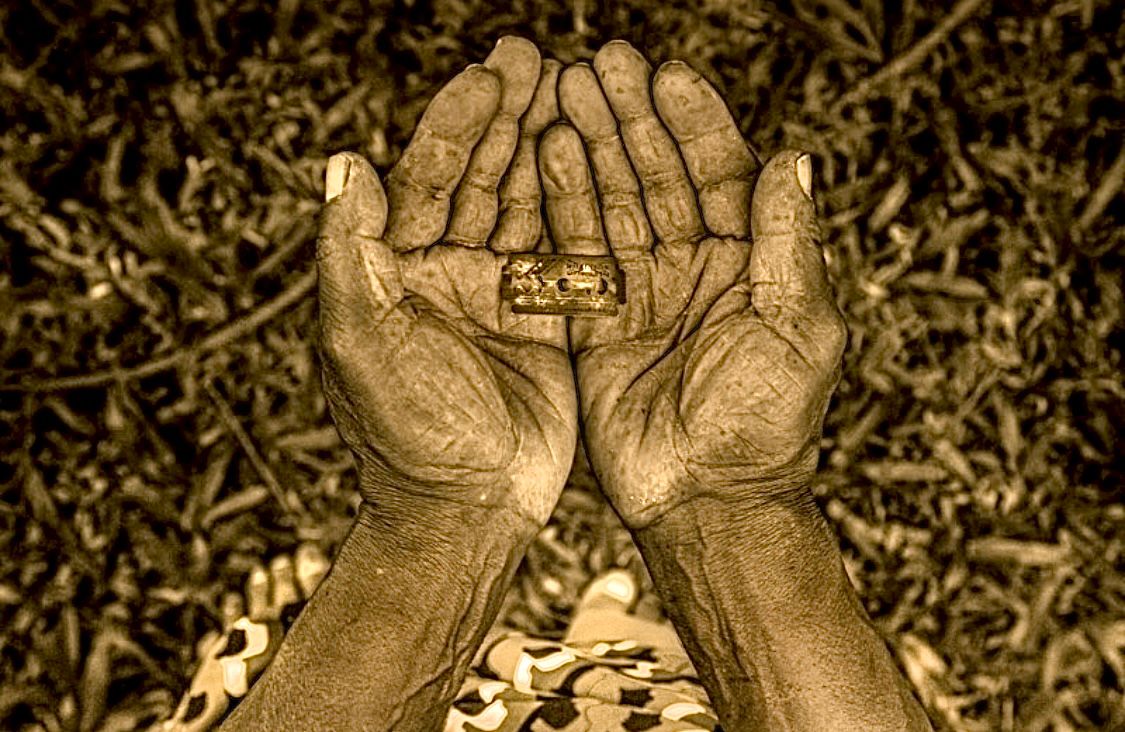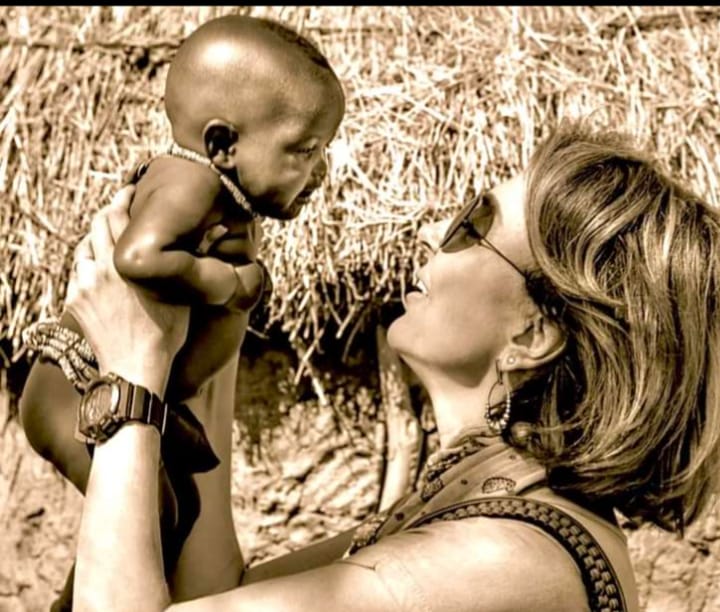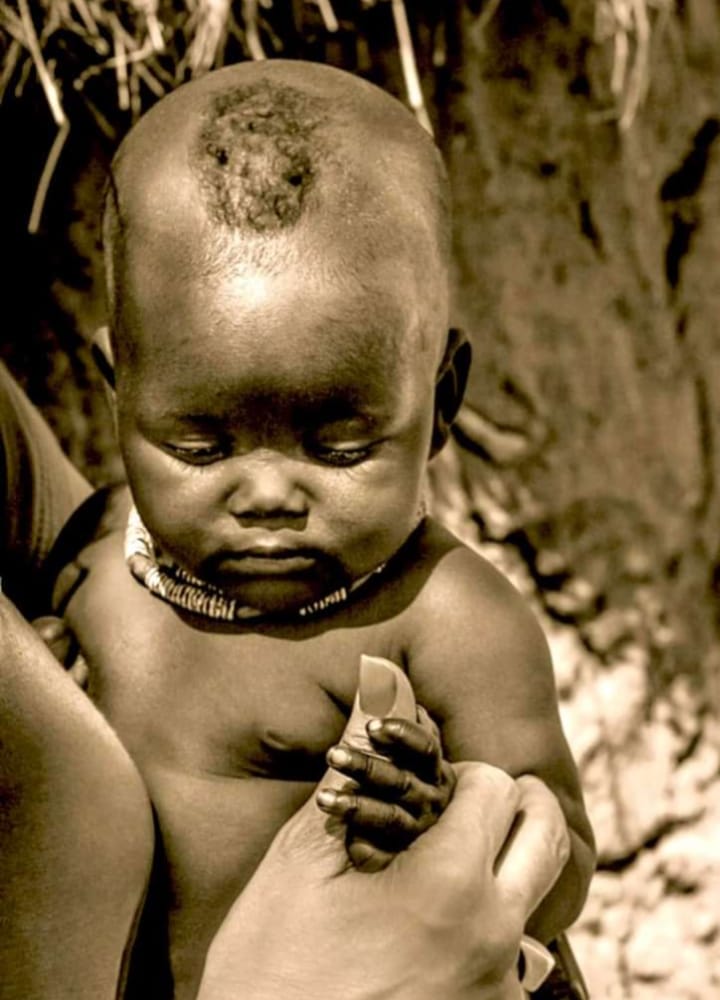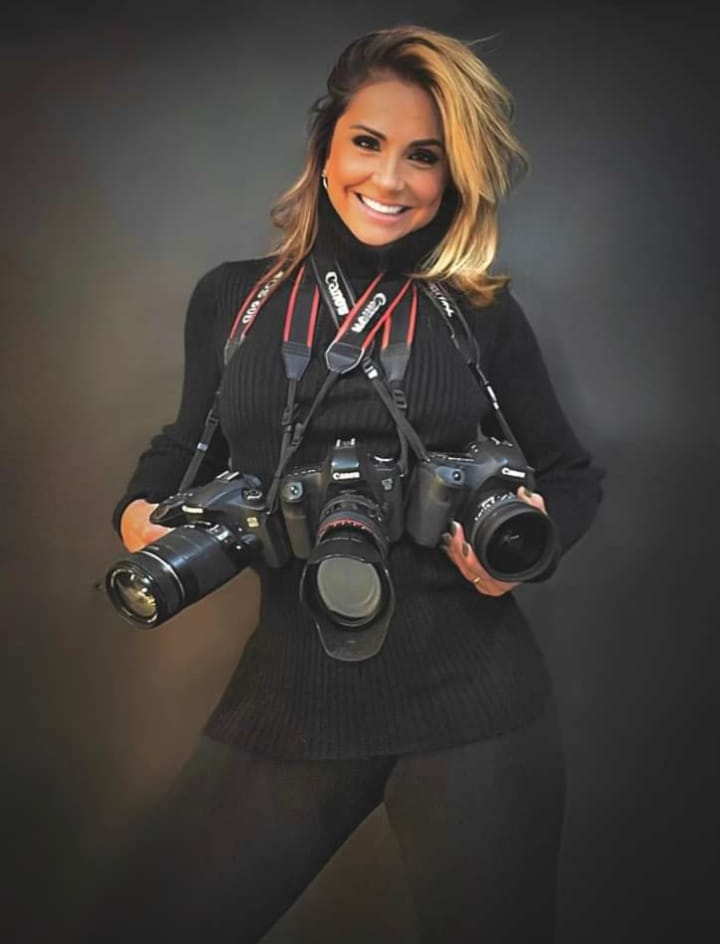Andréa Brêtas uses the camera lens to bring up the theme of Female Genital Mutilation in an exhibition of black and white photos, of african women, in four rooms at Correios Niterói RJ
The exhibition aims provoke the observer and raise awareness on ending violence against women, with interventions on the day 06 February (International FGM Zero Tolerance Day) and 08 March (International women's day)
“I want to tell the story of women who suffer violence, whoever they are, through the lens of my camera, and chose those who suffer female genital mutilation (MGF), practice that reaches more than 200 millions of women in more than 90 countries not world, being 29 in Africa.
Africa is a continent that has always fascinated me., something like belonging from another life. When I travel to take pictures, It's the only place I don't want to go back.
In the exhibition I present photos of Namibia and Kenya. Why? To create a counterpoint between the perspective of women in each country.
To Namibia, there is no mutilation. I was there and took amazing pictures. When I got back I watched the movie “desert Flower” (2009, Directed by Sherry Horman), about Somali model Waris Dirie, who ran away and in an interview with Marie Claire magazine, in 1996, already an international supermodel at the height of her career, opened to the world a subject hitherto considered taboo, a MGF.
So, I traveled to Kenya, where the practice takes place, so blatantly, who believe that “Only a cut woman is a good woman”. Em Enugu, state of nigeria, for example, I heard of a girl eight days old who was baptized and mutilated on the same day.
So, through the photos, the difference in looks, people will notice the difference between the expressions of women from these two countries, and they will certainly let themselves be taken by different emotions.
But the most important thing is the awareness that violence against women, regardless of how it is practiced, it must be spoken, shouted and shown.
My truth is these black and white looks. You are my guest to see the reason for this fight!”
Thephotographer and artist Andréa Brêtas presents theexhibition “cry”, where he brings pictures of African women in four rooms of Espaço Cultural Correios Niterói RJ, in black and white, to raise awareness about violence against women, mostly about theMGF – Female Genital Mutilation, who, according to Unicef, victimizes, within today, millions of women and girls around the world and that, each year, reaches about three million girls, before completing 15 years.
The show does not bring colors because it has thepurpose of provoking reactions and connections with the observer, but it clearly bears the respect of Andréa Brêtas' gaze and the excellence of Tartaglia Arte's curatorship in choosing themes of socio-cultural impact and importance.
“cry” happens between days 28 January and 11 March 2023, no accident. Since 2012, the date of06 February was adopted as the International Day of Zero Tolerance for Female Genital Mutilation, unanimously, in a vote of the General Assembly of the United Nations (Resolution 67/146). On08 March, we celebrate theInternational women's day. On both dates, Andréa Brêtas will be present for a guided tour and chat with other professionals to talk about the topic.
Tackling the multiple forms of violence against women is essential for more dignified and fair conditions, fighting for eradication, respect and equality.



TESTIMONIALS
“The killer was professional. I was paralyzed with fear. The woman took a broken razor blade out of the bag.” (victim's testimony)
“I felt that my flesh was being cut, the genitals. Heard the noise of the blade coming and going. Then I didn't feel anything anymore …because I passed out” (victim's testimony)
“If they are mutilated, girls can now wear underwear, will be more responsible, will find a husband. They are more complete and respected women. if they are not, are discriminated against (testimony of the matriarch of a village in Kenya)
“The body that God gave me at birth was perfect. Men have taken away my strength and made me handicapped. (victim's testimony).
“Africa tests our sense of humanity.
They are there to ask us to what degree we are human..
When the pain of the other stopped being our pain too?
Female Genital Mutilation exists.
African women resist.
It is us? Years, it is up to prove that being born a woman is worth it.” (Andréa Bretas)
ABOUT ANDREA BRÊTAS
Carioca, based in Petrópolis since 1992.
Graduated in Law, soon realized that he would not find full fulfillment in the legal world. Your soul has always sought the arts. With paintings and sculptures, he created exhibitions in and out of Brazil, selling works to various corners of the world. In photography, artists like Brooke Shaden, Danny Bittencourt, Sue Bryce and Flora Borsi act as inspiration and part of the academic background that she has accumulated through numerous courses and workshops here and abroad.. In the painting, the Kandinsky classics, Miró, Pollock and more Luís Aquila, Daniel Senise among others.
Sign up to receive Event News
and the Universe of Arts first!
Her artistic research seeks to expose the feminine interior as a focus and, for that, makes use of sculpture, of painting and photography as incessant tools of personal expression and demonstration of feelings.
Instagram: @andrea_bretas
Facebook: facebook.com/andreacbretas

EXHIBITIONS
. Solo exhibition “Everything Else Between Us” at Centro Cultural Correios RJ – RJ, 2022
. Collective exhibition of NFTs at World Art Dubai, Dubai , 2022.
. Group exhibition at Fábrica Bhering in the Center – RJ, 2022
. Group exhibition at Sala José Cândido de Carvalho in Niterói – RJ, 2021.
. Group exhibition at Centro Cultural dos Correios in RJ.
. European and Latin American Biennial of Contemporary Art, 2021.
. Collective Exhibition at the Correios Cultural Space in Niterói.
. European and Latin American Biennial of Contemporary Art, 2021.
. Group Exhibition at the Hamptons Fine Art Fair in New York, USA, 2021.
. Group exhibition at Saphira & Ventura Art Design Architecture em Nova York, USA, 2021.
. Solo exhibition “Shadows” at the BB Artes Visuais Collective in RJ, 2021.
. Group exhibition at Art Lab Gallery, in São Paulo, SP, 2021.
. Group exhibition at the 6th Circuit Art Búzios – Buzios, RJ, 2021
. Collective exhibition at Coletivo BB Artes Visuais in RJ, 2020.
. Solo exhibition “Come back to be happy” at the Bauhaus Space, Petrópolis – RJ, 2019.
. Solo exhibition “Once upon a time in a dream” at the Bauhaus Space, Petrópolis – RJ, 2019.
. Award-winning participation in Brasilia Photo Show – International Festival of Photography – Brasilia – DF, 2019.
. Group exhibition at Casa da Princesa Isabel – Master House of Natal, Petrópolis – RJ, 2019.
. Award-winning participation in Brasilia Photo Show – Internacional Festival of Photography – Brasilia – DF, 2018.
. Group exhibition at Art Expo in New York, USA, 2012.
. Solo exhibition “Fêmina” at the Raul de Leoni Cultural Center – Petrópolis – RJ, 2010.
PRIZES
. Gold Medal Award Brasília Photo Show Edition: 2021 Category: Infant Photo: Twins
. Statuette Award Top prize in the Brasília Photo Show Edition category: 2021 Category: infant photo: Helen and Elisha
. Honorable Mention Award Promissores Gallery Brasília Photo Show Edition: 2019/2020 Category: people portrait photo: Twins to Eternity
. Honorable Mention Award Promissores Gallery Brasília Photo Show Edition 2019/2020 Category: Street View Photos: pity
. Honorable Mention Award Promissores Gallery Brasília Photo Show Edition 2018/2019 Category: Random Photo: Himbas
FEMALE GENITAL MUTILATION – by dr. Vanessa Jaccoud, clinical psychologist and psychosomatist, Certified in Complex Trauma by Harvard Medical School
Practice is focused on 30 countries in Africa and the Middle East, and some places in Asia and Latin America. Although called by WHO a violation of human rights and has a date representing this fight for, it is still practiced by many countries and culturally seen as a tradition, as a rite of passage from childhood to adulthood for women, even if unfortunately, be done against their will in most cases.
The WHO describes the practice as “a procedure that injures the female genitals without medical justification”. The women who suffered when they were young, describe the practice as brutal and cruel, describe the unimaginable pain they feel and how they are treated without any remorse of care by the women who perform this practice, these are reports that no one should even imagine experiencing this trauma. The reasons for the practice are linked to their traditions and cultures, but there are more motives behind the brutality. Among some are in control of the sexuality of young women and girls, since practice is reality around the 12 years, often being a prerequisite for marriage and strong relation to child marriage. But many other communities already do this due to some myths that circulate among communities about female genitalia., believing that an uncut clitoris can grow to the size of a penis, or that the practice increases fertility, and others already consider the genitalia as dirty and ugly.
The practice has been carried out for some time, believing to predate the times of Christianity and Islam, which only shows even more how long these women have been suffering and are forced to submit, not just for the act itself, but for living in fear of your own culture, that your daughters will experience the same pain and your daughters will also, the hopelessness of receiving help or remorse for the same women who perform the act and the men who support and demand it. Although it is cultural and seen as a tradition by the communities that adhere. no religion per se condemns or promotes the practice. It is evident the innumerable brutalities of the act itself, the physical complications that can arise during and after the long term are numerous, even more is the lack of hygiene and the lack of importance by who and where they are carried out. Other than these, the worst are the effects caused on the mental health of these women.
Or trauma that remains non-physical, echoes also through the psychic. Loss of trust in others, self confidence, self-esteem and barriers created that make it difficult to relate to others, Anxiety and Depressive Disorders that can arise and remain with women who have experienced it. The fear that reigns in the lives of women who are not as lucky or privileged as we are, who were born into communities where they are forced to live in fear, subject to ideologies that were born “wrong” or that their body is something repugnant. “I believe the impact goes far beyond the trauma of the situation itself., of this violence, regardless of being in traditions, mass cultures or behaviors of a country. We are talking about a deconstruction of the feminine, of the situation that hurts and puts aside the expression of the feminine that is, mainly, can be exercised through your genital and contact with you, all this femininity and being able to appropriate it! We are feminine not only by genitals, obviously not, Mainly because we feel femininity emerge regardless of the body we are in, but when this body is appropriated and we are congruent with this feminine in the physical and this type of mutilation is suffered, I believe that part of this femininity, of this right to exercise the woman we are, in feeling in the soul and physical, in soma and psyche, is hurt there too, very painfully in all areas, bio, psycho, socio, cultural, psychic, and spiritual, precisely that puts to the test the certainty of knowing who one is. I need to pay attention to this.
This deconstruction of this feminine goes there in a series of certainties in who she is, and she starts to be undoing her own belief, of your own feeling, body, feminine appropriation she represents. It's not just tragic, but extremely violent and excessive. It needs to be seen that it is still happening in this century, a huge brutality. I have no idea how many disorders may be involved in the mental health of these women, but minimally traumatized by the physical brutality and the deconstruction of their souls, and the resonance that these acts bring to the person's life. So we talk about a practice that needs to be revisited and talked about to prevent it from being practiced and more women from suffering in future generations.. We talk a lot about violence against women., this is one of the global brutalities that the world offers to women. It really is very frightening to think about this pain of soul and body, belonging, cultural insertion, everything that permeates this woman and this femininity that is subject to everything that fits.”
ABOUT TARTAGLIA ART
Tartaglia Arte was founded in 1950 as a painting studio by artist Piero Tartaglia, then known as Piery. after a few years, created a point of reference and cultural meeting with other artists and young talents where, under the guidance of the Master, developed their personal style. Tartaglia's overwhelming passion for pictorial expression with bursts of pure color and violent contrasts that bring the canvas to life, gave life to the School of Disgregationism. Later he founded the Galleries, for permanent exhibition of their work and those of their students, and that today are directed by his son Riccardo.
The love for art and a broad cultural vision are the peculiarities of this great artist., and represent their moral and spiritual heritage. Heritage that continues to be represented by Riccardo Tartaglia, who works with the same seriousness and tenacity in the propagation of art, through international exhibitions and events. But all with the signature of Riccardo Tartaglia and Regina Nobrez (Member of the Academy of Fine Arts of Rio de Janeiro and Cultural Ambassador with Honoris Causa, by the Legislative Assembly of Santa Catarina – Honor of the Art of Florianopolis), which confers a certificate of credibility and creative sensitivity.
WebSite: tartagliaarte.org
Instagram: @riccardotartaglia @reginanobreztartaglia @tartagliaarte
SERVICE
Exhibition: cry
Artist: Andréa Bretas
Instagram: @andreabretas
Curated By: Riccardo Tartaglia and Regina Nobrez
Instagram: @riccardotartaglia @reginanobreztartaglia @tartagliaarte
Marchand and artist advisor: Georgia Nolasco @nolascoge
Opening: 28 January 2023 the 1:00 pm to 6:00 pm
Visitation: 28 from January to 11 March 2023
Local: Cultural Post Niterói
Av. Viscount of Rio Branco, 481 – Downtown – Niterói/RJ
Tel: (21) 2503-8550
From Monday to Friday, 11 am to 6 pm and Saturday, the 1:00 pm to 5:00 pm
Entrance: free
Rating: free
Press office: Paula Ramage @_paula_r_soares
Support: Italian Honorary Consulate – Florianópolis / SC – CIB/SC – Cultural Post
Access: boats (araribóia station), UBER, taxi, bus. From Rio, subway or bus to Carioca station, walk to the Ferry Station on Praça XV.
The location is accessible.
Free event.
Censorship free.
